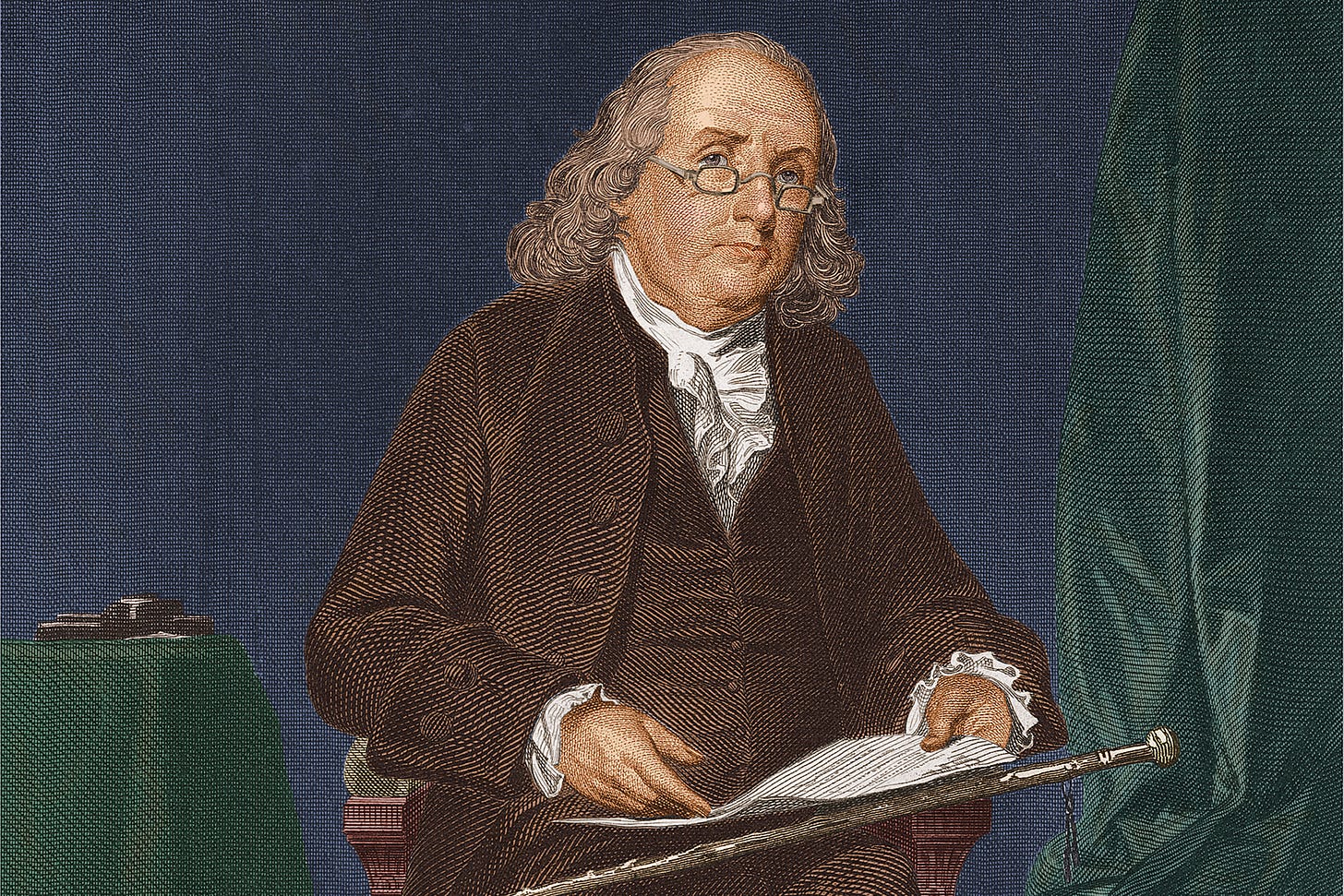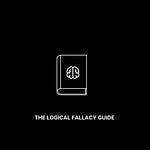Welcome to the 537 new members of the curiosity tribe who have joined us since Friday. Join the 27,544 others who are receiving high-signal, curiosity-inducing content every single week. Oh, and share this on Twitter to help grow the tribe!
Today’s newsletter is brought to you by Morning Brew!
Morning Brew is on my must-read list every single day. There's a reason over 3 million people start their day with Morning Brew — it’s a free daily email that delivers the latest news from Wall Street to Silicon Valley in an easy-to-digest format. Join millions of others and subscribe today!
Today at a Glance
Cognitive biases are systemic errors in thinking that negatively impact decision-making quality and outcomes.
Combatting cognitive biases relies first and foremost on establishing a level of awareness of the biases, but each has its own specific combat strategies as well.
Overview, examples, and combat tactics for common biases, including Loss Aversion, Endowment Effect, Ben Franklin Effect, Availability Bias, Survivorship Bias, Ikea Effect, Hindsight Bias, Plan Continuation Bias, Gambler’s Fallacy, and Curse of Knowledge.
The Cognitive Bias Handbook - Part II
Cognitive biases are systemic errors in thinking that negatively impact decision-making quality and outcomes. I recently shared a Twitter thread covering the basics of 20 cognitive biases - but it was admittedly surface-level (280 characters only allows for so much depth and nuance on a topic!).
Last week, I went deeper, with Part I of The Cognitive Bias Handbook, covering 10 common cognitive biases, including examples and ways to combat each. Today, I will cover the remaining 10.
As a reminder, this two-part newsletter series was split as follows:
Part I (last week) covered Fundamental Attribution Error, Bandwagon Effect, Egocentric Bias, Naïve Realism, Baader-Meinhof Phenomenon, Pygmalion Effect, Confirmation Bias, Backfire Effect, Anchoring, and Dunning-Kruger Effect.
Part II (today) covers Loss Aversion, Endowment Effect, Ben Franklin Effect, Availability Bias, Survivorship Bias, Ikea Effect, Hindsight Bias, Plan Continuation Bias, Gambler’s Fallacy, and Curse of Knowledge.
This handbook is designed to be a resource you can save and come back to whenever you need a refresher. Given the volume and importance of the information, I am considering working with an illustrator to convert it into a physical/digital book that you can reference as well. Stay tuned!
Without further ado, let’s dive into Part II…
Loss Aversion
What is it?
The pain of losing something is more powerful than the pleasure of winning it.
Loss aversion was first identified by famed behavioral scientists Amos Tversky and Daniel Kahneman, who found that humans had a tendency to prefer avoiding losses over acquiring equivalent gains. Accordingly, people were typically willing to take actions to avoid losses that they wouldn’t have taken to seek gains.
Economists had previously assumed humans were rational actors - that $100 in losses would drive the same amount of pain as $100 in gains would create pleasure. Wrong. Humans are enigmatic creatures!
Examples
Investors - professional and amateur alike - exhibit loss aversion. The pain and fear of realizing a loss often leads investors to hold onto losing positions much longer than they should.
Gamblers who are in the red for a given night often risk much more to try to get back into the black (above breakeven) than they should.
How do you combat it?
Loss aversion is hardwired into our primate brains, but as always, awareness is the first step to fighting back against its influence.
Avoid emotional connection to your possessions - whether they are investments, material items, or money. Attempt to distance your emotions from the decision-making process where possible.
Ask questions:
Am I being objective and rational in this decision?
Am I letting my emotions influence my decision?
Am I too connected emotionally to make a rational decision?
If you are too connected to a given decision, you may need to outsource it to an objective third-party.
The Endowment Effect
What is it?
A close relative of loss aversion, the endowment effect (sometimes called “divestiture aversion”) says that once we have something, we don't want to give it up.
Specifically, we demand more to give up an object than we would be willing to pay to acquire it. In slightly more scientific terms, willingness to pay (“WTP”) to acquire an object is typically lower than willingness to accept (“WTA”) to give up an object.
Examples
In a classic experiment performed by Richard Thaler, two groups of people were placed in a room and given either (a) a fancy pen or (b) a coffee mug. They were then asked if they would be willing to trade their item for the alternate item. Both groups expressed an unwillingness to trade their endowed item for the alternate item, even though they had similar objective values.
In another study of NCAA Final Four ticket-holders, it was found that their WTA was ~10x+ higher than their WTP for the same tickets. Insane!
How do you combat it?
The path to fighting back against the endowment effect is, unsurprisingly, very similar to that of loss aversion.
Force a level of hyper-awareness of the irrational gap between your WTA and your WTP on a possession. Use your imagination to distance yourself from the possession and think objectively about its value and utility.
It’s never perfect, but it’s a start.
The Ben Franklin Effect
What is it?
"He that has once done you a kindness will be more ready to do you another, than he whom you yourself have obliged." - Benjamin Franklin
Put simply, doing one favor for a person makes you more likely to do another favor for that person than if you had received a favor from them.
Humans love to reinforce our own self-perceptions. If we perform a favor for another person, we have become a “favor-giver” in our minds. We become more likely to reinforce this self-perception by performing another favor.
The Ben Franklin Effect says that this reinforcing effect is more powerful than the desire to return a favor when one has been done for you.
Examples
The best example of The Ben Franklin Effect is of how Ben Franklin’s eponymous effect was born.
Early in his career, Benjamin Franklin once sought to convert a political adversary into a fan. He did so by requesting a favor from the adversary (he asked for a book from his personal library). Flattered by the request, the adversary quickly obliged and loaned Franklin the book.
After he returned the book (with a nice thank you note!), Franklin noted that the adversary became a neutral supporter in all future interactions.
By drawing out a favor from the hater, he turned him into a fan (or at least a neutral bystander).
How do you combat it?
With the Ben Franklin Effect, rather than focusing on how to combat it, it is perhaps more impactful to think about the best ways to use it to your advantage in your own life.
As a brand or an individual, developing an awareness of this cognitive bias should allow you to think creatively about leveraging its power for converting haters into fans.
Availability Bias
What is it?
Humans love shortcuts.
We evaluate situations based on the most readily available data, which tends to be what can be immediately recalled from memory. Our minds perceive what can be immediately recalled as being of the utmost importance. We give ourselves too much credit.
Availability Bias is the tendency to massively overweight recent and new information in formulating opinions or making decisions.
Examples
The impact of the news cycle on our opinions, thinking, and decisions is perhaps the best example of Availability Bias in action. Its persistent negativity cements a belief that the world is a dark place.
When exposed to consistent news stories about terrorist attacks or child abductions, humans significantly overestimate the actual frequency and likelihood of these events taking place.
Our irrational fear of insanely low probability events (like shark attacks and plane crashes) is an example of this in action.
How do you combat it?
There are two key ways to fight Availability Bias:
Focus on base rates (the actual prevalence of an event or feature in a given sample). In the example of shark attacks, compare the number of shark attacks globally to the number of people who went in the ocean. Slow down and consider the actual numbers.
Turn off the news. Seriously, just stop watching the news. Ironically, it makes you less well-informed about the world around you. More consumption creates noise bottlenecks.
There are other tactics and strategies, but these two will get you a long way.
Survivorship Bias
What is it?
History is written by the victors.
But concentrating on "survivors" and systematically ignoring "casualties" leads to distortions in our conclusions. Namely, we overestimate the odds of success because we only read about the successes.
Examples
The story of the WWII planes is a classic (you can read about it in this thread), but there are so many examples of Survivorship Bias in action.
When you only read stories about the garage startups that became trillion dollar companies (Apple, Microsoft, etc.), you fail to realize the insanely low probabilities of this level of success. What about all of the garage startups that failed? What about all of the entrepreneurs who double-mortgaged their house and then went bankrupt?
How do you combat it?
Combatting Survivorship Bias involves two critical approaches:
Recognize the potential for “hidden” or “silent” evidence. What might you have learned from the casualties that is masked by the lack of data on them?
With (1) in mind, examine and study the base rates (similar to the approach with Availability Bias). The base rates hold the truth.
Develop a keen awareness of the potential for missing evidence and its impact on your judgement of probability of success.
The Ikea Effect
What is it?
If you build it, you love it.
Named after Ikea, the Swedish furniture retailer famous for its build-it-yourself products, this cognitive bias says that people ascribe significantly more value to objects that they have created or assembled, irrespective of the final quality of the object.
Scientists believe this happens because we infuse our own self worth into the object, thereby increasing its value in our minds.
Examples
Homeowners will frequently overvalue homes that they have customized or built themselves.
Businesses often seek to exploit the Ikea Effect by having you customize or build your product prior to purchase. They recognize that the individualized experience enhances the feeling of ownership and increases WTP.
How do you combat it?
There are several tactics that can be helpful:
Ask for objective feedback. Solicit unbiased feedback from a third-party source. They won’t lie to you the way your emotions might.
Take a break. Temporarily remove yourself from the creation process and zoom out to see the bigger picture of the item, its quality, and the broader landscape.
Develop an awareness of your emotional attachments. As with all cognitive biases, awareness is key. Recognize your emotional attachment to an item and try to distance yourself from it.
The Ikea Effect isn’t particularly harmful in most cases, but these tactics will help you combat it on balance.
Hindsight Bias
What is it?
Hindsight Bias (sometimes referred to as “creeping determinism”) says that humans have a tendency to believe that events of the past were more predictable than they actually were.
We examine the past with the benefit of hindsight but fail to recognize its impact on our thinking. It generally leads to overconfidence, prevents acceptance of responsibility, and causes people to create and distort memories in order to align with a false belief of what had occurred.
Examples
When asked to predict the outcome of a Senate vote, 58% of participants in a study responded that the bill would pass. The bill passed, at which point the participants were asked if they had thought it would pass. At this point, ~80% said they had known it would pass. Participants were distorting the past to align with what happened in reality.
Investors fall victim to this frequently. If you’ve ever thought or heard that the outcome of an earnings release was “so obvious” after the fact, you’re witnessing Hindsight Bias in action.
How do you combat it?
First things first, always remember that the world is extremely complex and you absolutely cannot predict the future.
Next, with big, impactful decisions, take notes on your decision-making process and the key variables impacting your thinking. This will prevent you from being a revisionist when you look back at it in a post-mortem.
As an investor, these strategies can be very helpful, as they will prevent you from missing out on the learnings from your failures that will make you a better investor.
Plan Continuation Bias
What is it?
Humans love structure.
Plans provide structure, so even when the plan appears to be failing (or no longer an appropriate fit for a given situation), we have a tendency to want to continue along with them.
This creates a lot of issues. The dangers of a rigid "stick to the plan!" mentality are very real.
Examples
Anyone who has worked in a professional setting has experienced Plan Continuation Bias in the wild. Particularly in large, bureaucratic organizations, the desire to “stick to the plan” and “stay in your lane” is built into the culture.
The world of sports has myriad examples of this bias in action as well. How many teams have lost matches because they were unwilling to adapt? The best teams (and coaches) tend to come back after halftime with a revised approach, experiencing a surge from a refreshed strategy and plan of attack.
How do you combat it?
The two keys to combatting Plan Continuation Bias:
Have a clear North Star. What is the ultimate goal? It’s not to create a certain type of rocket - it’s to get to space as cost-effectively and safely as possible. Make the North Star clear (both internally and externally).
Adopt a flexible mindset. Rigidity is for bureaucrats - leave it for them to own. Be dynamic and foster a flexible, growth-oriented culture and mindset.
The Gambler’s Fallacy
What is it?
Humans are naturally quite bad with probabilities.
The Gambler's Fallacy says that we have a tendency to believe that past events alter future outcomes, when the events are entirely independent and identically distributed.
Examples
The most famous example of this occurred in Monte Carlo Casino in 1913, when it is alleged that a roulette wheel landed on black 26 times in a row (which has a probability of occurring of ~1 in 67 million). Gamblers watching the events lost millions by betting on red, reasoning that the wheel was “due for a red".
(Note: If you are at a casino and the roulette wheel lands on black 26 times in a row, you should probably just leave, as it might be the case that the game is broken or rigged).
How do you combat it?
Awareness here is crucial. When you are dealing with random, independent events, always remind yourself that nothing is “due” to occur.
Focusing on the independence of the events is a solid technique - this plane has no idea that a lot of other planes have safely completed trips before it, and therefore they have no bearing on whether this plane will land safely or not.
The Curse of Knowledge
What is it?
A classic in the business world, the Curse of Knowledge says that experts (or generally, intelligent people) tend to make the flawed assumption that others have the same background and knowledge on a topic as they do.
These individuals are unable to teach or lead in an effective manner for those still coming up the learning curve.
They are literally “cursed” with knowledge that prevents them from teaching effectively.
Examples
The Curse of Knowledge is commonly seen with professors, business leaders, or “experts” of specific fields.
They assume the audience has a baseline level of knowledge, but this assumption is often unfounded. It leads to frustration and cultural tension in both sides of the teacher-student relationship.
How do you combat it?
As the teacher, always be aware of the basis of your understanding of a topic. If it is based on years of accumulated expertise, you have to bring others up the learning curve prior to building upon it.
The ELI5 (“Explain It To Me Like I’m 5”) rule works well - assume you are teaching the topic to a 5-year-old until proven otherwise.
As a student, communicate openly on the gaps in your foundational understanding on a more advanced topic. If it is in a group setting, chances are that someone else is feeling the same way and just afraid to say it!
So that does it for Part 2 of The Cognitive Bias Handbook, covering Loss Aversion, Endowment Effect, Ben Franklin Effect, Availability Bias, Survivorship Bias, Ikea Effect, Hindsight Bias, Plan Continuation Bias, Gambler’s Fallacy, and Curse of Knowledge.
As mentioned, given the volume and importance of the information, I am considering working with an illustrator to convert it into a physical/digital book that you can reference in future. If there is enough demand for it, I’ll definitely pull it together.
Stay tuned!
Sahil’s Job Board - Featured Opportunities
Launch House - Community Lead (New & Exciting!)
Free Agency - Chief of Staff (New & Exciting!)
Commonstock - Community Manager, Marketing Designer
Panther - Customer Delight Manager
Metafy - Senior Product Designer, Senior Technical Recruiter
Beyond Protocol - Director of Ops, Director of Business Development
Avicado - Marketing Manager, Data Consultant
Pesto Tech - Account Executive
Pallet - Full Stack Software Engineer
Atreides Management - Data Analyst
The full board can be found here!
We have had a bunch of hires through the board and the results for featured roles have been insane! If you are a high-growth company in finance or tech, you can use the “Post a Job” button to get your roles up on the board and featured in future Twitter and newsletter distributions.
That does it for today. Join the 27,500+ others who are receiving high-signal, curiosity-inducing content every single week! Until next time, stay curious, friends!
















